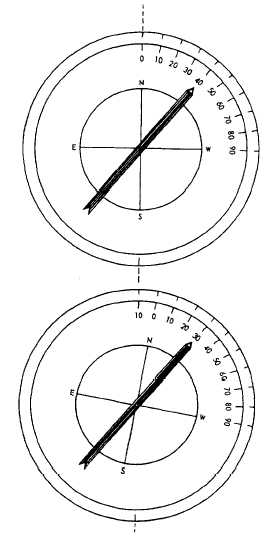Figure 13-7.-Orienting a compass for a 10° easterly
attraction.
For example, with a compass affected by a
10°W local attraction, you want to lay off a
line bearing S28°W magnetic by compass. If you
were correcting, you would subtract a westerly
attraction in the southwest quadrant. However,
for uncorrecting you ADD a westerly attraction
in that quadrant. Therefore, to lay off a line
bearing S28°W, you would lay off S38°W by the
compass.
The same rule applies to azimuths. Suppose
you have an azimuth-reading (measured from
north) compass set up where local attraction is
10°W and declination is 25°E, and you want to
lay off a line with true azimuth 256°. The
algebraic sum of these is 15°E. For correcting or
converting azimuths, you ADD easterly and
SUBTRACT westerly corrections; therefore, if
you were correcting or converting, you would add
the 15° to 256°. Because you are uncorrecting or
unconverting, however, you subtract; and, to lay
off a line with true azimuth 256°, you read 241°
by the compass.
Orienting a Compass
Some transit compasses and most surveyor’s
and forester’s field compasses are equipped for
offsetting local attraction, local declination,
and/or the algebraic sum of the two. In figure
13-7, the upper view shows a compass bearing of
N40°W on a compass presumed to be affected by
a local attraction of 10°E. In this quadrant,
you subtract easterly attraction; therefore, the
magnetic bearing should read N30°W.
In the lower view, the same compass has been
oriented for an error of 10°E by simply rotating
the compass card 10°E clockwise. On most
orienting compasses, the card can be released for
rotating by backing off a small screw on the face
of the card. Note that you now read the correct
magnetic bearing of N30°W.
Conducting a Compass-Tape Survey
Figure 13-8 shows field notes from a compass-
tape survey of a small field. The instrument used
was a surveyor’s compass. The compass was first
set up at station A, shown in the sketch drawn
on the remarks page. The first bearing taken was
that of the line AE. This was actually the back
bearing of EA, taken for the purpose of later
checking against the forward bearing of EA.
Next, the bearing of AB was taken, and the
distance from A to B was chained. The observed
bearing (S62°20´E) was entered beside B in the
column headed “Obs. Bearing.” The chained
distance was entered beside B in the column
headed “Dist.”
The compass was shifted to station B, and the
back bearing of AB (that is, the bearing of BA)
was taken as a check on the previously taken
bearing of AB. The back bearing turned out to
have, as it should have, the same numerical value
(62°20´) as the forward bearing. A difference in
the two would indicate either an inaccuracy in
reading one bearing or the other or a difference
in the strength of local attraction.
13-6

